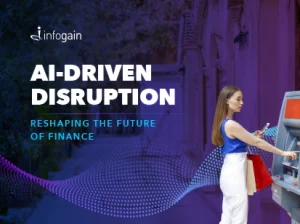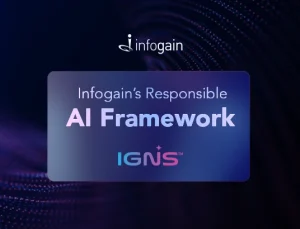Approach, challenges, benefits & test strategies for testing microservices in containers
- Posted on : August 3, 2021
-
- Industry : Corporate
- Type: Blog

“Testing is more than just checking the pass or fail," Infogain’s Susheel Kumar Yadav, our technical program manager-testing, told attendees at The World Test Engineering Summit. The virtual event took place July 15 and 16, 2021, and included sessions on modern testing strategies, including quality assurance, agile testing, microservices, and test automation technology.
Yadav presented “Testing Microservices in Containers,” covering the technicalities of testing microservices architectures.
Here’s a quick snapshot of all that he covered in his presentation
Microservices is an evolution of service-oriented architecture that structures an application as a collection of services.
Before this evolution, there was no guidance on how to size a service or what to include in it. This resulted in monolithic large services that couldn’t be scaled up or changed in a reliable way. Microservices introduced a new set of design principles aimed at educating people on sizing a service correctly, making it more efficient, scalable, and flexible.
During the development phase, microservices are tiny in nature. But the complexity increases with the number of integration points and data that travels between each point. This complexity increases the challenges during testing in locating the reasons for a failure.
Now, failure could happen at any layer including:
- Code Test data formatting while transmitting to another service
- Synchronization or timeout
- Technical endpoints
- Communication protocol
- Tracking the service travel path
While implementing the test strategy for microservices, failure at any layer can lead to the following challenges:
- Integration testing and debugging the data flow
- Tracing failed request or request analysis
- Complexity
- Chain-reaction errors
- Additional endpoints
- Different communication channels or protocols
Important to have a balanced testing approach
Since microservices architecture breaks down a single large system into units, more have to be tested. That is essential to keep the business up and running and ensure continuity even after any upgrades.
It's important that we have a good way to know each microservice is working and interacting correctly with the others. Since this involves multiple moving pieces, there isn't just one technique you should use. There are many different types of tests that can be performed, and each type has different strengths and weaknesses. It is important to have a balanced testing approach using multiple types of tests at different phases.
For an effective test approach for microservices, consider this:
- Ensure the overall system and isolated web services function as expected
- Adjust testing strategy to the new architecture
- Implement a balanced approach to cater to the different types of testing
- Run different types of tests to increase the confidence of the organization in releasing the software
- Use automated test execution and fail-fast systems to address dependency issues sooner -- time is crucial for business continuity
Therefore, Infogain recommends the following practices to address the challenges and quickly identify the reasons for failure to fix them.
- Replicate the entire cloud environment locally
- Test all API endpoints
- Use containers/dockers for functional and non-functional requirements
- Log the travel path of microservices
- Implement CI/CD
- Execute a gating strategy
- Employ centralized logging
- Automate testing as much as possible
- Monitor and observe microservices
Conclusion
There isn’t a single solution for testing microservices architectures. Every technique will have pros and cons. However, a balanced testing approach that implements multiple types of testing, depending on the development phase, can ensure the microservices interact appropriately.
Next in microservices testing
In subsequent blogs, we will detail the challenges that occur while implementing the test strategy, types of testing required for microservices architectures, measuring performance, and Infogain’s end-to-end microservices testing strategy using DevOps.







